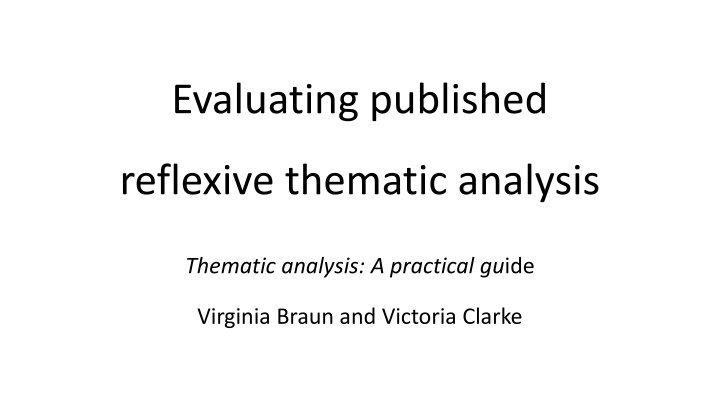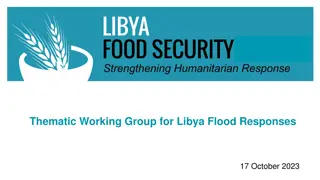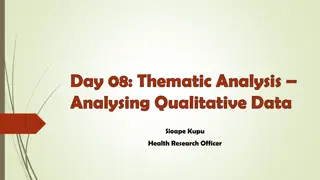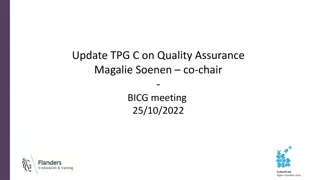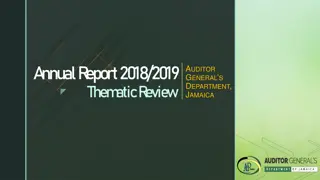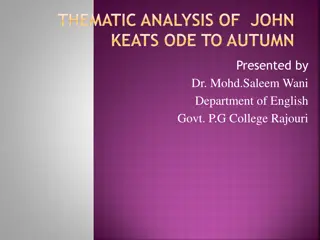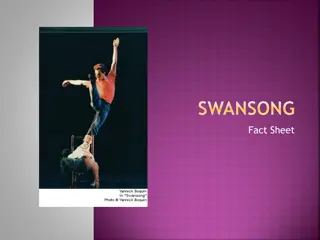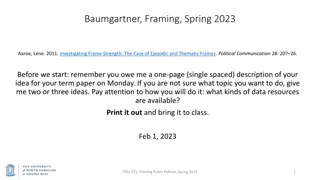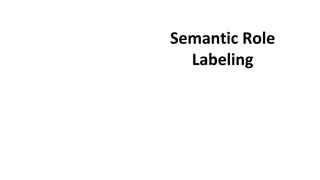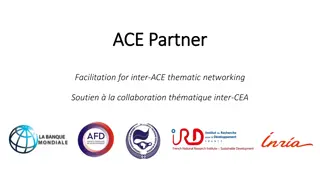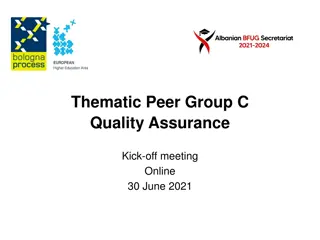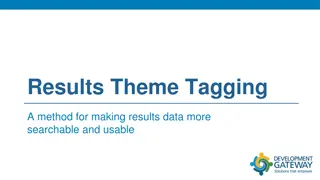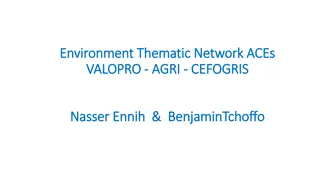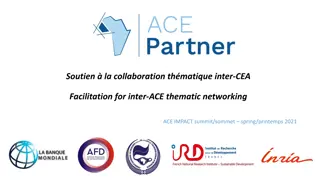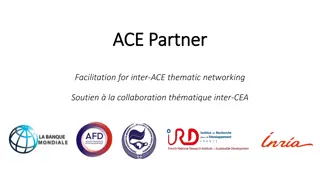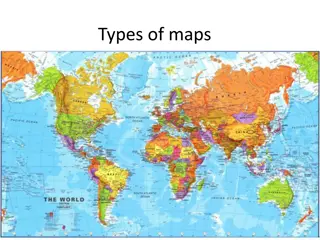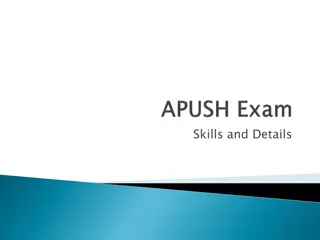Evaluating Published Thematic Analysis
This guide delves into evaluating published thematic analysis, focusing on methodological integrity, theoretical assumptions, researcher reflexivity, and academic publishing constraints. It discusses identifying research types, theoretical underpinnings, and the use of thematic analysis in qualitative research reports.
Download Presentation

Please find below an Image/Link to download the presentation.
The content on the website is provided AS IS for your information and personal use only. It may not be sold, licensed, or shared on other websites without obtaining consent from the author.If you encounter any issues during the download, it is possible that the publisher has removed the file from their server.
You are allowed to download the files provided on this website for personal or commercial use, subject to the condition that they are used lawfully. All files are the property of their respective owners.
The content on the website is provided AS IS for your information and personal use only. It may not be sold, licensed, or shared on other websites without obtaining consent from the author.
E N D
Presentation Transcript
Evaluating published reflexive thematic analysis Thematic analysis: A practical guide Virginia Braun and Victoria Clarke
Getting started on evaluating published thematic analysis Select a published TA article to evaluate there are examples on the companion website. To help you assess the methodological integrity (Levitt et al., 2017) of the research you have chosen to evaluate, start your evaluation by determining the broad contours of the research how can we categorise this piece of research? For example, is it small q or Big Q (or confused q)? Experiential or critical? Realist, critical realist or relativist? (Post)positivist, contextualist or constructionist? What theory of language underpins the treatment of data?
Getting started on evaluating published thematic analysis continued Do the authors explicitly identify what type of research this is and own their perspectives (Elliott et al., 1999)? If yes, are these stated theoretical assumptions and values consistently and coherently evident and enacted throughout the report? If no, can you detect what their implicit assumptions and values are from things like the language they use, how they treat and interpret the data? Is there any evidence of researcher reflexivity within the paper?
Be mindful of the constraints of academic journal publishing continued Limited word counts, the expectations and expertise of the editors and reviewers, the style and conventions of the journal all shape and constrain how research is reported. Do a quick Google search for the journal on the journal home page, is there a word/page count for qualitative research reports? (tight <[less-than] six-thousand words; generous >[greater-than] ten-thousand words) Any guidelines for reporting qualitative research? Any guidelines for reviewers assessing qualitative research?
Be mindful of the constraints of academic journal publishing continued Search within the journal contents for thematic analysis does this generate lots of hits? Indicators of a potentially positive qualitative publishing context include: generous/higher word counts for qualitative research; qualitative experts on the editorial board; reporting/reviewer guidelines that reflect a sound understanding of qualitative research values; and lots of reflexive thematic analysis published in the journal.
Evaluating the authors use of thematic analysis What sources on reflexive thematic analysis do the authors draw on? If multiple authors/sources on thematic analysis are these complimentary or contradictory? Is the use of reflexive thematic analysis knowing? Do the authors describe a particular orientation to thematic analysis? (for example, inductive or deductive or a mix, semantic or latent coding/theme development or a mix?) Is this consistently evident and enacted in the analysis?
Evaluating the authors use of thematic analysis continued Do the authors explicitly or implicitly elide the diversity within the thematic analysis family of methods, treating thematic analysis as a singular approach with a standardised set of procedures? Are there evidence of unknowing mash-ups of different approaches (for example, reflexive thematic analysis with a codebook and consensus coding)? Do the authors make problematic assumptions about thematic analysis (for example, it s atheoretical, only realist/essentialist, descriptive, summative, inductive)?
Evaluating the authors use of thematic analysis final slide Do the authors make assumptions and articulate values and concepts not consistent with reflexive thematic analysis (for example, concern for the truth and accuracy of the analysis)?
Evaluating the authors rationale for thematic analysis and their account of the analytic process Do the authors provide a compelling rationale for their use of/particular approach and orientation to thematic analysis? Are their reasons for using thematic analysis centred on generic features of thematic analysis (for example, flexible, accessible)? If so, are these explicitly related to the goals and purpose of the research? Is there a good fit between the authors stated (or implicit) theoretical assumptions and values, the research question and the use of thematic analysis?
Evaluating the authors rationale for thematic analysis continued Does the authors account of their analytic process provide a lively sense of how specifically they engaged with thematic analysis (which goes beyond listing the six phases)? In multi-authored papers, do the authors discuss how each contributed to the analysis? Do the authors describe any quality practices (for example, keeping a reflexive journal)?
Evaluating the themes Is the researcher s active role in theme generation evident (there is no mention of the themes emerging )? Can you easily identify what and where the themes are in the report? How many themes (at all levels) are reported? Too many, or too few? Is each theme presented in sufficient depth and detail? If sub-themes and overarching themes are used is the use of these judicious and compelling, and does it strengthen the analysis?
Evaluating the themes continued How do the authors (implicitly) conceptualise themes? (Topic summaries or shared meaning? Entities that reside in data fully formed prior to analysis or the outputs of a subjective coding process?) Have the authors confused single faceted codes with multi- faceted themes? Consider both the theme names and content. Do the theme names capture the essence or story of each theme? Are the scope and boundaries of each theme clear? Does each theme stand alone but contribute to an overall story about the data? Is there any undesirable overlap between the themes?
Evaluating the analytic narrative and use of data extracts What is the rough proportion of analytic narrative to data extracts? Too many or too few data extracts? Is the analytic narrative thin or rich? Does the analytic narrative offer summary and description of the data or interpretation of their meaning (or a mixture of both)? Are data extracts used illustratively or analytically (or a mix)? Do the selected extracts provide a compelling sense of patterning across the data?
Evaluating the analytic narrative and use of data extracts continued Are the chosen extracts vivid and engaging? Is the interpretation of the data, and selected extracts, plausible? Can you identify the authors overall conclusions? Are you convinced by these? Either in the analysis or the discussion, do the authors contextualise their data and interpretation of it in relation to the existing literature and (where relevant) wider contexts?
Whats your overall assessment of the report? Is the research useful and insightful? Does the report evidence a sound and knowing use of reflexive thematic analysis? Are there flaws/areas for improvement? Would the research have benefitted from different reporting conventions (for example, more oriented to qualitative values; a longer word count)?
References Elliott, R., Fischer, C. T., & Rennie, D. L. (1999). Evolving guidelines for publication of qualitative research studies in psychology and related fields. British Journal of Clinical Psychology, 38(3), 215-229. Levitt, H. M., Motulsky, S. L., Wertz, F. J., Morrow, S. L., & Ponterotto, J. G. (2017). Recommendations for designing and reviewing Qualitative research in psychology: Promoting methodological integrity. Qualitative Psychology, 4(1), 2-22.
